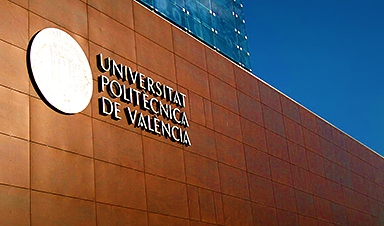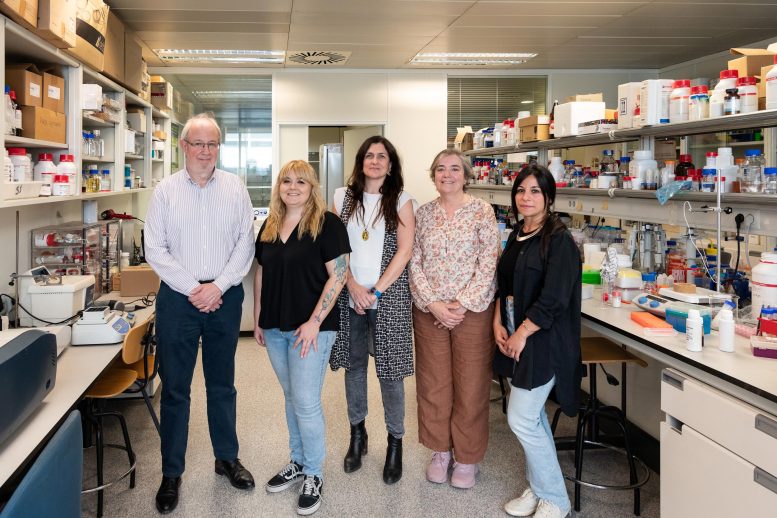Cinnamon oil-based nanodevice effectively targets key pathogens, with potential uses in healthcare and food safety
A team of researchers from the Universitat Politècnica de València (UPV) and the CIBER de Bioingeniería, Biomaterials y Nanomedicine (CIBER-BBN) has created an innovative antimicrobial nanodevice utilizing cinnamaldehyde, an essential oil component from cinnamon.
This “nano killer” has demonstrated considerable effectiveness in combating pathogenic microorganisms such as Escherichia coli, Staphylococcus aureus, and Candida albicans. The potential applications of this technology include pathogen elimination in food products, wastewater treatment, and the management of hospital-acquired infections.
Pathogen Impact and Application Methods
The pathogens targeted by this nanodevice can cause severe health issues. Escherichia coli strains, for example, are typically harmless but some can lead to significant abdominal pain, diarrhea, and vomiting. Staphylococcus aureus may cause skin and bloodstream infections, osteomyelitis, or pneumonia. Candida albicans, a fungus found in biological fluids, is known for causing diseases like candidemia and invasive candidiasis.
The researchers say this application of this “nanokiller” would be very simple: “For example, we could create a spray, make a formulation based on water and other compounds, and apply it directly. We could make a water-based formulation in the field and spray it directly, like any pesticide today. And in hospitals, it could be applied on bandages, and we could even try to make a capsule that could be taken orally,” explains Andrea Bernardos, a researcher in the NanoSens group at the Inter-University Institute for Molecular Recognition Research and Technological Development (IDM).
Enhanced Efficacy and Potential
The new nanodevice improves the efficacy of encapsulated cinnamaldehyde compared to the free compound: about 52-fold for Escherichia coli, about 60-fold for Staphylococcus aureus, and about 7-fold for Candida albicans.
“The increase in the antimicrobial activity of the essential oil component is possible thanks to the decrease in its volatility due to its encapsulation in a porous silica matrix and the increase in its local concentration when released due to the presence of the microorganisms,” said Bernardos.
The device stands out for its high antimicrobial activity at very low doses. In addition, it enhances the antimicrobial properties of free cinnamaldehyde with a reduction of the biocidal dose of around 98% for bacterial strains (Escherichia coli and Staphylococcus aureus) and 72% for the yeast strain (Candida albicans) when the nanodevice is applied.
“Moreover, this type of device containing natural biocides (such as essential oil components) whose release is controlled by the presence of pathogens could also be applied in fields such as biomedicine, food technology, agriculture, and many others,” concludes Ángela Morellá-Aucejo, also an IDM researcher at the Universitat Politècnica de València.
The results of this study have been published in the journal Biomaterials Advances.
Reference: “Remarkable enhancement of cinnamaldehyde antimicrobial activity encapsulated in capped mesoporous nanoparticles: A new “nanokiller” approach in the era of antimicrobial resistance” by Ángela Morellá-Aucejo, Serena Medaglia, María Ruiz-Rico, Ramón Martínez-Máñez, María Dolores Marcos and Andrea Bernardos, 26 March 2024, Biomaterials Advances.
DOI: 10.1016/j.bioadv.2024.213840
News
Fake Science Is Growing Faster Than Legitimate Research, New Study Warns
New research reveals organized networks linking paper mills, intermediaries, and compromised academic journals Organized scientific fraud is becoming increasingly common, ranging from fabricated research to the buying and selling of authorship and citations, according [...]
Scientists Unlock a New Way to Hear the Brain’s Hidden Language
Scientists can finally hear the brain’s quietest messages—unlocking the hidden code behind how neurons think, decide, and remember. Scientists have created a new protein that can capture the incoming chemical signals received by brain [...]
Does being infected or vaccinated first influence COVID-19 immunity?
A new study analyzing the immune response to COVID-19 in a Catalan cohort of health workers sheds light on an important question: does it matter whether a person was first infected or first vaccinated? [...]
We May Never Know if AI Is Conscious, Says Cambridge Philosopher
As claims about conscious AI grow louder, a Cambridge philosopher argues that we lack the evidence to know whether machines can truly be conscious, let alone morally significant. A philosopher at the University of [...]
AI Helped Scientists Stop a Virus With One Tiny Change
Using AI, researchers identified one tiny molecular interaction that viruses need to infect cells. Disrupting it stopped the virus before infection could begin. Washington State University scientists have uncovered a method to interfere with a key [...]
Deadly Hospital Fungus May Finally Have a Weakness
A deadly, drug-resistant hospital fungus may finally have a weakness—and scientists think they’ve found it. Researchers have identified a genetic process that could open the door to new treatments for a dangerous fungal infection [...]
Fever-Proof Bird Flu Variant Could Fuel the Next Pandemic
Bird flu viruses present a significant risk to humans because they can continue replicating at temperatures higher than a typical fever. Fever is one of the body’s main tools for slowing or stopping viral [...]
What could the future of nanoscience look like?
Society has a lot to thank for nanoscience. From improved health monitoring to reducing the size of electronics, scientists’ ability to delve deeper and better understand chemistry at the nanoscale has opened up numerous [...]
Scientists Melt Cancer’s Hidden “Power Hubs” and Stop Tumor Growth
Researchers discovered that in a rare kidney cancer, RNA builds droplet-like hubs that act as growth control centers inside tumor cells. By engineering a molecular switch to dissolve these hubs, they were able to halt cancer [...]
Platelet-inspired nanoparticles could improve treatment of inflammatory diseases
Scientists have developed platelet-inspired nanoparticles that deliver anti-inflammatory drugs directly to brain-computer interface implants, doubling their effectiveness. Scientists have found a way to improve the performance of brain-computer interface (BCI) electrodes by delivering anti-inflammatory drugs directly [...]
After 150 years, a new chapter in cancer therapy is finally beginning
For decades, researchers have been looking for ways to destroy cancer cells in a targeted manner without further weakening the body. But for many patients whose immune system is severely impaired by chemotherapy or radiation, [...]
Older chemical libraries show promise for fighting resistant strains of COVID-19 virus
SARS‑CoV‑2, the virus that causes COVID-19, continues to mutate, with some newer strains becoming less responsive to current antiviral treatments like Paxlovid. Now, University of California San Diego scientists and an international team of [...]
Lower doses of immunotherapy for skin cancer give better results, study suggests
According to a new study, lower doses of approved immunotherapy for malignant melanoma can give better results against tumors, while reducing side effects. This is reported by researchers at Karolinska Institutet in the Journal of the National [...]
Researchers highlight five pathways through which microplastics can harm the brain
Microplastics could be fueling neurodegenerative diseases like Alzheimer's and Parkinson's, with a new study highlighting five ways microplastics can trigger inflammation and damage in the brain. More than 57 million people live with dementia, [...]
Tiny Metal Nanodots Obliterate Cancer Cells While Largely Sparing Healthy Tissue
Scientists have developed tiny metal-oxide particles that push cancer cells past their stress limits while sparing healthy tissue. An international team led by RMIT University has developed tiny particles called nanodots, crafted from a metallic compound, [...]
Gold Nanoclusters Could Supercharge Quantum Computers
Researchers found that gold “super atoms” can behave like the atoms in top-tier quantum systems—only far easier to scale. These tiny clusters can be customized at the molecular level, offering a powerful, tunable foundation [...]






















